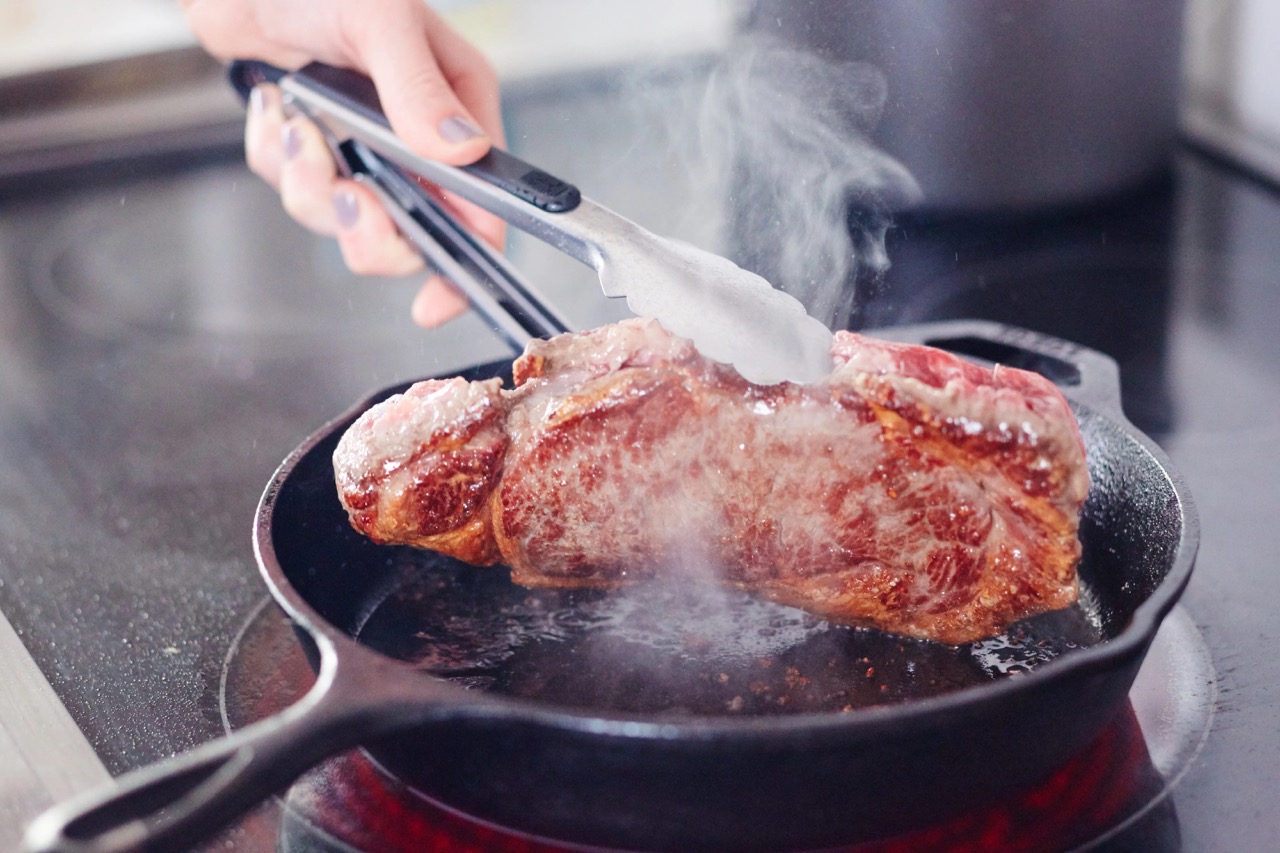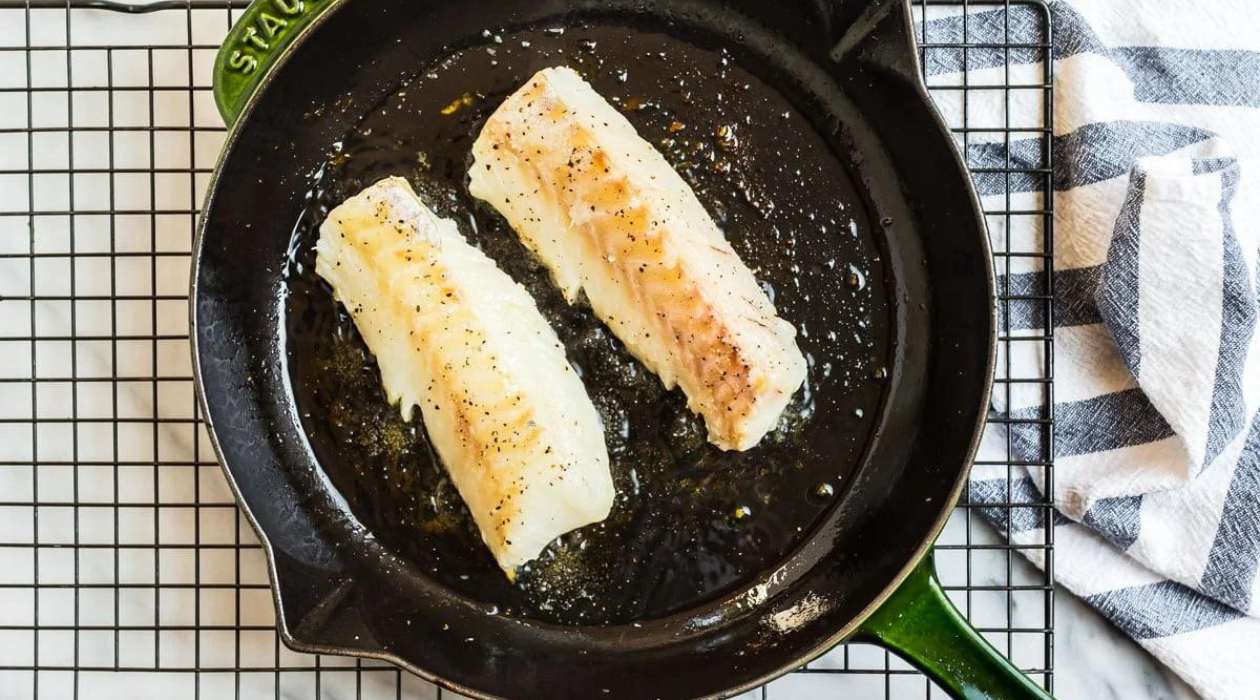

Articles
How To Cook Ribeye On Stove Top
Modified: January 6, 2024
Learn how to cook delicious ribeye steak on the stove top with our informative articles. Discover tips and techniques for perfecting this mouthwatering dish.
(Many of the links in this article redirect to a specific reviewed product. Your purchase of these products through affiliate links helps to generate commission for Storables.com, at no extra cost. Learn more)
Introduction
Welcome to the world of delicious steak! If you’re a steak lover like me, you probably can’t resist the mouthwatering taste and juicy tenderness of a perfectly cooked ribeye. While grilling is a popular method for preparing steaks, there’s no need to worry if you don’t have an outdoor grill. You can still achieve that restaurant-quality taste and texture by cooking your ribeye on a stovetop.
In this article, we will dive into the art of cooking a ribeye on a stovetop, step by step. We’ll explore everything from choosing the right ribeye cut to checking for doneness—a guide that will help you master this cooking method and impress your family and friends with your steak-cooking skills.
So, let’s fire up the stovetop, grab our favorite ribeye cut, and get ready to cook a delicious steak that will rival any restaurant’s offering!
Key Takeaways:
- Master the art of cooking a delicious ribeye on your stovetop by choosing the right cut, preheating the pan, and checking for doneness. Impress your guests with a restaurant-quality steak at home!
- Elevate your steak-cooking skills by properly preparing, cooking, and resting your ribeye. Achieve the perfect balance of flavors and textures for a mouthwatering dining experience.
Read more: How To Bake On The Stove Top
Choosing the Right Ribeye
When it comes to cooking a ribeye on the stovetop, selecting the right cut of meat is crucial to achieving the best results. Here are some helpful tips:
- Cut: Look for ribeye cuts that are well-marbled with fat. The marbling adds flavor and helps keep the meat moist during cooking. A bone-in ribeye can also enhance the flavor, but boneless ribeye cuts are equally delicious.
- Thickness: Opt for ribeye steaks that are at least 1 inch thick. Thicker cuts ensure more even cooking and a juicier steak.
- Grade: Consider the grade of the ribeye. Prime grade ribeye is the highest quality and offers exceptional tenderness and marbling. Choice grade ribeye is also a good option and offers great flavor.
- Freshness: Choose ribeye cuts that are bright red in color and have minimal discoloration or browning. Check the packaging or ask your butcher for the freshest cuts available.
Remember, choosing a high-quality ribeye will greatly enhance the taste and texture of your cooked steak. So take your time when selecting the perfect cut, and be prepared to savor a truly remarkable dining experience!
Preparing the Ribeye
After selecting the perfect ribeye, it’s time to prepare it for cooking. Follow these steps to ensure your ribeye is ready to hit the stovetop:
- Remove from the refrigerator: Take the ribeye out of the refrigerator and let it sit at room temperature for about 30 minutes. This allows the steak to cook more evenly.
- Seasoning: Season the ribeye generously with salt and pepper or your favorite steak seasoning. You can also add other spices or herbs to suit your taste.
- Pat dry: Use paper towels to pat the ribeye dry. This step helps to ensure a better sear and caramelization during cooking.
By following these simple steps, you’ll have a well-seasoned and perfectly prepared ribeye ready to be cooked on the stovetop.
Preheating the Stovetop
To achieve the ideal cooking temperature for your ribeye steak, it’s essential to properly preheat the stovetop. Here’s what you need to do:
- Select the right pan: Choose a heavy-bottomed skillet or cast-iron pan for cooking the ribeye. These types of pans distribute heat evenly and retain heat effectively.
- Heat the pan: Place the skillet or pan on the stovetop over medium-high heat. Allow it to heat up for a few minutes until it becomes hot.
- Add oil or butter: Once the pan is hot, drizzle a small amount of cooking oil or melt butter in it. Swirl the oil or butter around the pan to coat the surface evenly.
- Heat until shimmering: Continue heating the pan with the oil or butter until it starts to shimmer or slightly smoke. This indicates that the pan is properly preheated and ready for cooking the ribeye.
By following these steps, you’ll ensure that your stovetop is preheated to the ideal temperature, providing the perfect cooking surface for your ribeye steak.
For a perfect ribeye on the stove top, make sure the steak is at room temperature before cooking, and use a heavy-bottomed pan to ensure even heat distribution. Sear the steak for a few minutes on each side, then finish in the oven for the desired doneness.
Cooking the Ribeye
Now that your ribeye steak is seasoned and your stovetop is preheated, it’s time to start cooking! Follow these steps for a perfectly cooked ribeye:
- Place the steak in the pan: Carefully place the ribeye in the hot skillet or pan. You should hear a sizzling sound as the steak makes contact with the hot surface.
- Sear the first side: Cook the ribeye on the first side for about 3-4 minutes or until a golden brown crust forms. Avoid moving the steak around too much to allow for optimal searing.
- Flip the steak: Use tongs to flip the ribeye to the other side. Cook for an additional 3-4 minutes to sear the second side.
- For a medium-rare steak: Cook the ribeye until the internal temperature reaches 130°F (54°C). Adjust the cooking time accordingly for your desired level of doneness.
- Continuously baste with melted butter and herbs: During the cooking process, spoon some melted butter and herbs over the steak. This adds extra flavor and helps keep the meat moist.
Remember, cooking times may vary depending on the thickness of the ribeye and your stove’s heat. It’s important to monitor the internal temperature using a meat thermometer to achieve your desired level of doneness.
By following these steps, you’ll be able to enjoy a perfectly cooked ribeye steak that is juicy, flavorful, and caramelized on the outside.
Read more: How To Cook Okra On Stove Top
Checking for Doneness
Checking for doneness is a crucial step in cooking the perfect ribeye steak. Here’s how you can determine the level of doneness:
- Touch Test: Use the touch test to determine the doneness of your ribeye. Press the center of the steak with your finger. If it feels soft and squishy, it’s rare; if it feels slightly firm with a little bounce, it’s medium-rare; and if it feels firm with no bounce, it’s well done.
- Meat Thermometer: Use a meat thermometer to get an accurate reading of the internal temperature of the ribeye. The following temperatures indicate the different levels of doneness:
- Rare: 120-125°F (49-52°C)
- Medium Rare: 130-135°F (54-57°C)
- Medium: 140-145°F (60-63°C)
- Medium Well: 150-155°F (66-68°C)
- Well Done: 160°F (71°C) and above
Once the ribeye reaches your desired level of doneness, it’s time to remove it from the heat and let it rest.
Remember that the ribeye steak will continue to cook slightly as it rests, so it’s better to take it off the heat a few degrees below your desired final temperature.
Resting and Serving the Ribeye
Resting the ribeye is a crucial step after cooking as it allows the juices to redistribute throughout the meat, resulting in a more flavorful and tender steak. Here’s how to properly rest and serve your ribeye:
- Remove from heat: Once your ribeye reaches the desired level of doneness, carefully remove it from the heat source using tongs and transfer it to a cutting board or serving platter.
- Tent with foil: Loosely tent the ribeye with aluminum foil to keep it warm and allow for gentle resting. This step helps retain heat and prevents the steak from cooling down too quickly.
- Resting time: Let the ribeye rest for about 5-10 minutes. This resting period allows the juices to redistribute, resulting in a moist and flavorful steak.
- Slice and serve: After the resting period, it’s time to slice and serve your perfectly cooked ribeye. Use a sharp knife to carve the steak against the grain into thin slices for optimal tenderness.
- Optional: You can further enhance the flavors by serving your ribeye with a pat of herb butter, a drizzle of steak sauce, or a side of your favorite accompaniments like roasted vegetables or mashed potatoes.
Now that your ribeye has rested and is ready to be served, sit back and enjoy the fruits of your labor. Slice into the steak and savor the juicy and flavorful goodness of a well-cooked ribeye steak.
Conclusion
Learning how to cook a ribeye on a stovetop opens up a world of possibilities for enjoying a delicious steak in the comfort of your own home. With the right techniques and attention to detail, you can achieve that perfectly seared and tender ribeye that will rival any restaurant’s offering.
Remember to start with a high-quality ribeye cut, properly season and prepare the steak, and preheat your stovetop to create the ideal cooking surface. Cooking the ribeye to your desired level of doneness, checking with either the touch test or a meat thermometer, ensures that you achieve the perfect balance of flavors and textures.
Allowing the ribeye to rest before slicing and serving is an essential step in maintaining moisture and maximizing the flavors. Finally, get creative with your accompaniments and sauces to elevate your dining experience even further.
By following these steps and techniques, you’ll be able to impress your family and friends with your stovetop ribeye cooking skills. So, fire up that stovetop, grab a juicy ribeye, and get ready to enjoy a mouthwatering steak that will have everyone talking!
Frequently Asked Questions about How To Cook Ribeye On Stove Top
Was this page helpful?
At Storables.com, we guarantee accurate and reliable information. Our content, validated by Expert Board Contributors, is crafted following stringent Editorial Policies. We're committed to providing you with well-researched, expert-backed insights for all your informational needs.















0 thoughts on “How To Cook Ribeye On Stove Top”